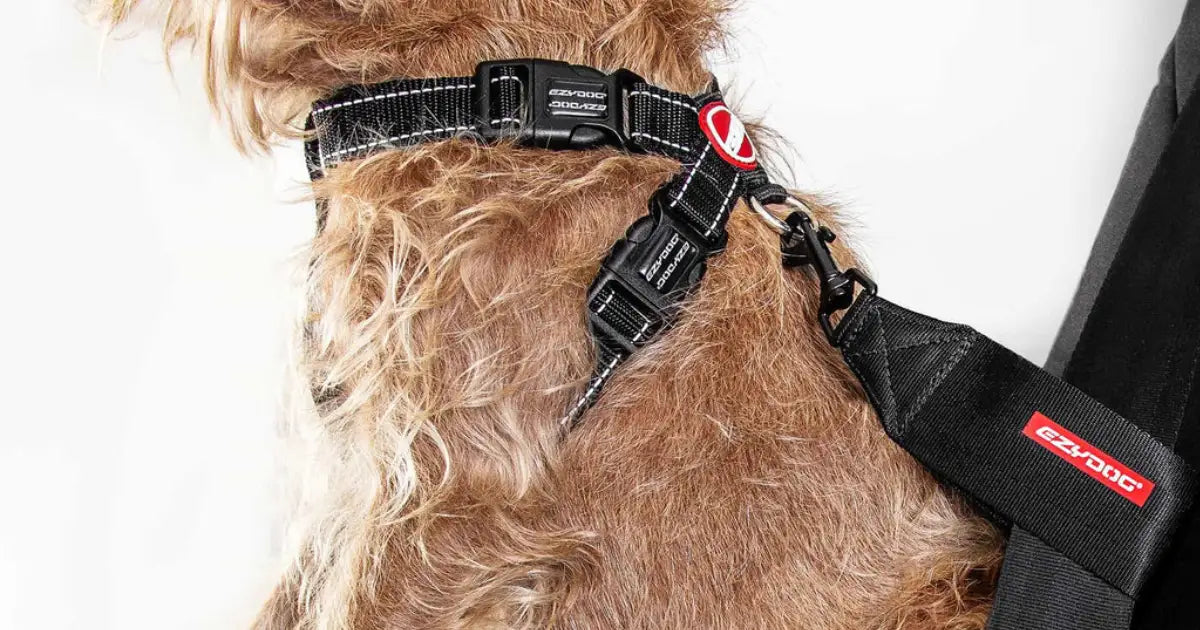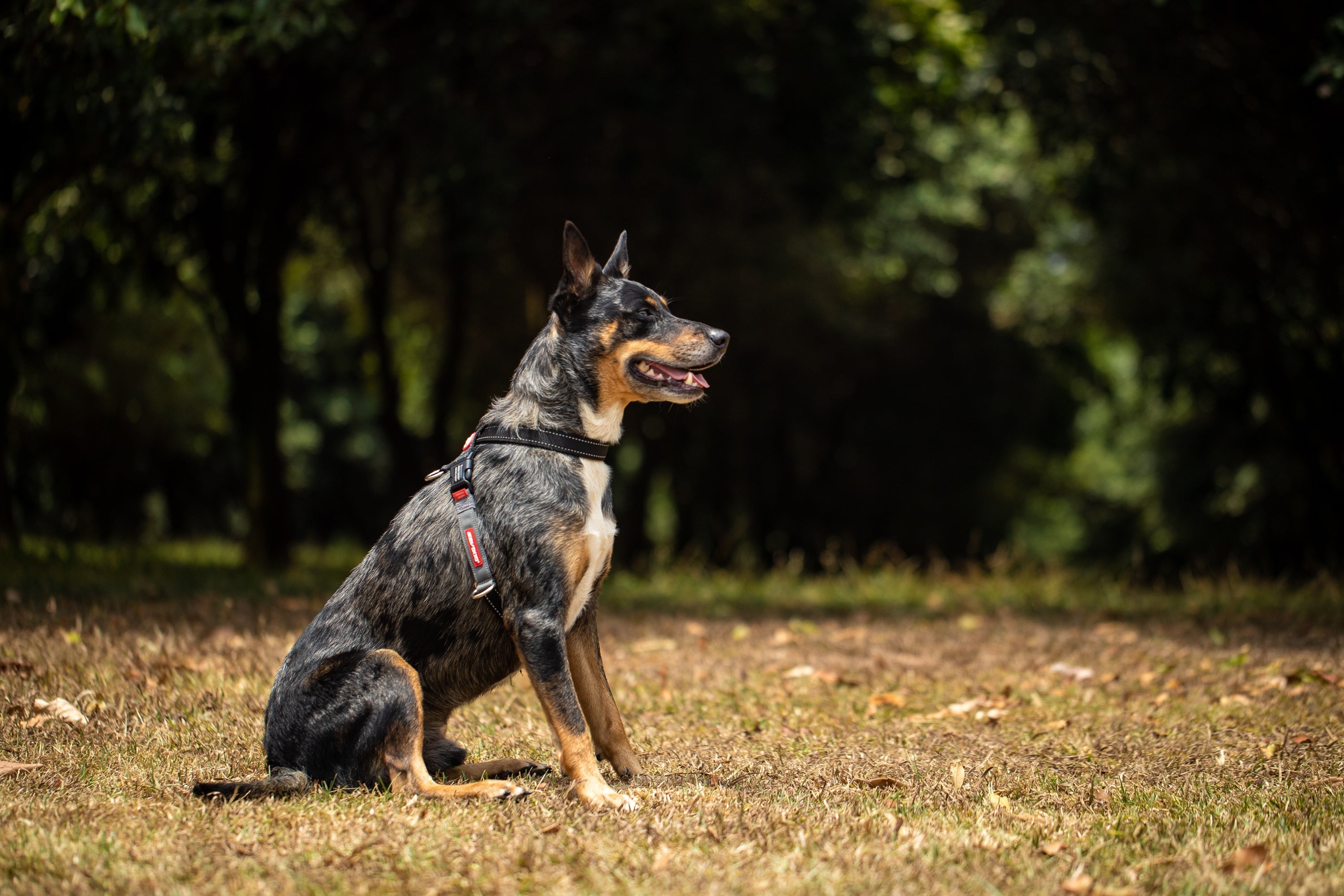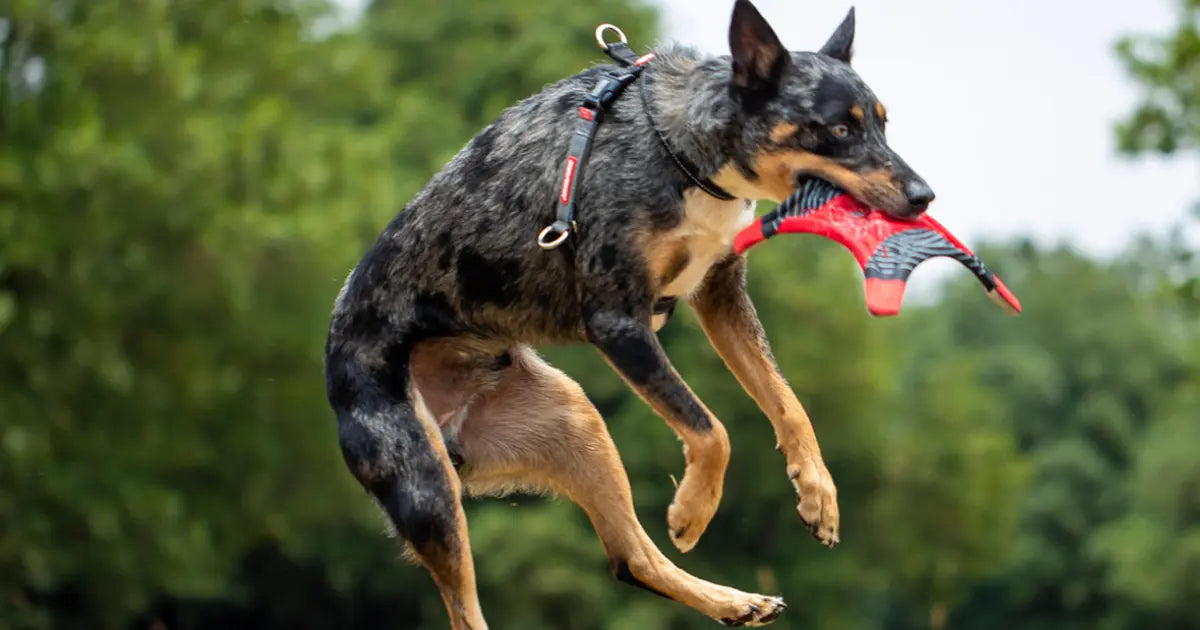
Harness vs Collar: Can My Dog Wear a Harness Instead?
Alright, dog lovers – let’s settle the age-old debate: Harness or collar? If you’ve ever wondered which is better for your dog’s comfort and safety, you’re in the right place. Whether you’re a new puppy parent or have a seasoned sidekick, choosing the right gear can make all the difference to happy walks and wagging tails.
The short answer? Yes – most dogs can wear a harness instead of a collar, and for many, it’s the healthier choice. But collars still have their place for trained dogs and quick outings.
If you’re considering switching, explore our Dog Harness Collection. And before you buy, check your dog’s size using our step-by-step measuring guide.
Harnesses and Collars: What’s the Difference
Before you choose, it’s important to understand how these two pieces of gear work differently.
- Harnesses: Think of them as a supportive full-body hug, distributing pressure evenly across the chest and shoulders. They reduce strain on the neck, making them ideal for dogs that pull or breeds prone to respiratory issues.
- Collars: Collars are lightweight and convenient, great for holding ID tags and for calm, leash-trained dogs. But they place pressure directly on the neck, which can cause injury to pullers or dogs with delicate tracheas.
Expert Insight: Many vets and trainers agree that harnesses are safer for puppies, small dogs, and breeds like Pugs or French Bulldogs, as they reduce the risk of tracheal injuries.
When to Choose a Harness?
Switching to a harness is recommended if your dog:
-
Pulls on the lead: No-pull harnesses gently discourage pulling by distributing force across the body.
-
Is a puppy or small breed: Their delicate necks need better pressure distribution. The Step-In Harnesses are perfect options for small breeds or puppies.
-
Is a brachycephalic breed: Short-nosed dogs (Pugs, Frenchies) benefit from less neck strain.
-
Is a large or strong breed: Harnesses provide better support and prevent excessive neck pressure compared to collars.
-
Is active or adventurous: Hiking or trail walking is safer with supportive harnesses like the Convert or Chest Plate.
For more recommendations, see our Best Dog Harnesses guide.
When is a Collar Still Useful?
Don’t write collars off just yet – they still have their place:
-
Identification: UK law requires dogs to wear a collar with ID tags in public.
-
Calm, trained dogs: Collars are fine for short, casual outings.
-
Quick trips: Collars are easy to slip on for brief garden breaks or vet visits.
Many owners use both – a collar for ID tags and daily wear, and a harness for training or longer walks.
Harness & Collar: Why Not Both?
In the debate of harness vs collar, you don’t always have to pick just one. Many dog owners find that using both works perfectly. A collar is ideal for holding ID tags and for quick, casual outings, while a harness offers better control and safety for walks, training, or outdoor adventures.
Think of it as your dog’s wardrobe: a collar for everyday wear and identification, and a harness for those longer walks, training sessions, or exciting adventures. This combination keeps your dog safe, comfortable, and stylish in every situation.
For the best harness options to pair with your dog’s collar, explore our full Dog Harness Collection.
Pros and Cons of Harnesses vs Collars
|
Feature |
Harness |
Collar |
|
Control |
Best for training & pullers |
Suitable for calm, leash-trained dogs |
|
Comfort |
Even pressure across the chest |
Can strain the neck & throat |
|
Safety |
Safer for dogs with respiratory or neck issues |
Fine for dogs without health concerns |
|
Ease of Use |
Takes slightly longer to fit |
Quick and simple to wear |
How to Transition from a Collar to a Harness
Switching is easy with a bit of patience:
-
Introduce gradually: Let your dog sniff and get used to the harness indoors.
-
Use short sessions: Put it on for a few minutes with treats and praise.
-
Positive association: Reward calm behaviour while wearing it.
-
Start with short walks: Extend gradually as your dog becomes comfortable.
-
Check the fit regularly: Use the two-finger rule and adjust straps as needed.
For a full fitting guide, read our article on: How to Put On a Dog Harness.
Expert Opinions – What Trainers and Vets Recommend
-
For Puppies & Small Dogs: Lightweight harnesses like step-in or adjustable designs are best to protect delicate necks.
-
For Dogs That Pull: Trainers often recommend front-clip or no-pull harnesses to redirect pulling without causing discomfort.
-
For Brachycephalic Breeds: Vets strongly suggest harnesses to reduce respiratory strain.
Many trainers agree that combining consistent training with the right harness makes walks calmer and safer.
Recommended Harnesses for Switching from Collars
If your dog is used to a collar, start with harnesses that are easy to fit:
-
Quick Fit Harness – Almost as simple as a collar, perfect for beginners.
-
Chest Plate Harness – Distributes pull pressure evenly, great for comfort.
-
Crosscheck Harness – Ideal for training and pulling control.
-
Drive Car Harness – Secure and crash-tested for travel.
See all styles in our Dog Harness Collection.
FAQs – Harness vs Collar
1. Can my dog wear a harness all the time?
No, a harness is for walks or travel, not continuous wear. Keeping it on all day may cause rubbing or matting. At home, use a collar with ID tags. Check Step 5 for fit tips.
2. Does a harness encourage pulling?
No. A proper no-pull harness helps reduce pulling by gently redirecting your dog’s movement.
3. What are the disadvantages of a dog harness?
Harnesses take slightly longer to put on and may cause chafing if not fitted correctly. Always follow the two-finger rule, and choose Adjustable Harnesses for growing dogs.
4. What harnesses do dog trainers recommend?
Trainers often recommend no-pull harnesses for strong dogs, step-in harnesses for small or nervous dogs, and supportive options like the Chest Plate or Crosscheck.
5. Is it legal for a dog to wear a harness instead of a collar in the UK?
Yes, dogs can be walked in a harness only, but UK law requires a collar with ID tags in public.
6. Should dogs wear collars in the house?
For comfort and safety, remove collars indoors, especially for long-haired dogs. Outdoors, collars are essential for ID tags.
7. Why do some dog trainers not like harnesses?
Some trainers believe the wrong type of harness or a poor fit can encourage pulling. Choosing a well-designed no-pull harness and combining it with proper leash training prevents this issue.
Final Thoughts
For most dogs, a harness is the safer and more comfortable choice, especially for puppies, pullers, or breeds with sensitive necks. Collars remain useful for ID tags and calm dogs, but for daily walks, a harness offers better support and long-term comfort.
Ready to find the perfect fit? Explore EzyDog’s range of collars and harnesses and start enjoying those walks without the worry.


